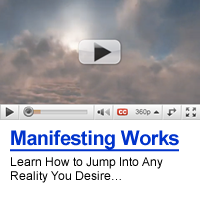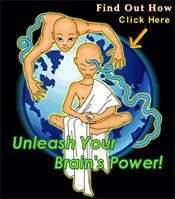The Super Conscious Mind & Preternatural Human Be-ing
![]() Christina Sarich, Contributing Writer
Christina Sarich, Contributing Writer
Waking Times
Like the Bauhaus movement in art, developed from our own societal anxieties about creating more soulless machines and silly manufactured products, we once turned from the material world. Creativity is the mind’s very nature. There is a way to join our soul with its full expression, just like we tried in many times before the current one. The preternatural human being is not ‘normal’ in the way we are told to be. We are more than our past impressions or current lackluster life. Just wait. . .there is so much more. Drawing from a similar period of time, we can springboard from modern psychology into an understanding of our true potential greatness.
Fortunately for the yoga student of the 21st century, the conceptualization of the mind and its components does not go against psychological nuggets offered at the turn of the century, but there is an important distinction to be made in order to practice true yoga.
Yoga is not the act of bending into odd postures, but of joining the consciousness to its unlimitedness. While pranayama (breathing), asana (postures), jnana (intellect), dharana (concentration), and dhyana (meditation) are all tools to help us facilitate this expansion, the realization of Super Consciousness happens in an instant. We use our intellect, body, and breath to understand something that is so massive, yet essentially simple so that we can arrive at a greater wisdom. It is for this reason that we can begin to untangle Big Mind, to use a recently coined phrase, with small tools. Psychology is one of them.
“The pendulum of the mind oscillates between sense and nonsense, not between right and wrong.” —Carl Gustav Jung
In fact, the bon mots of Jungian psychology are laid out so that we can understand the collective or individual mind in very specific terms. They are indeed ‘good words,’ which articulate what many students experience in their first attempts at meditation. The main difference between the yogic idea of mind or consciousness and the western psychological one; however, is key.
Is Mind Created by the Brain?
Psychologists, as well as other scientists in differing fields, mistakenly assumed that mind or consciousness was purely material in form. It understands not what yoga proposes, which is that matter is controlled by mind, and not the other way around. The material reality we experience is so utterly subjective, but it seems to cause thought. It turns yogic philosophy on its head!
The subtle vibrations of the consciousness, are in fact, what causes the world of form or exist at all. It is so sensitive to the fluctuations of the mind, that you can literally call to yourself the exact people, experiences and situations that you most often ruminate on.
This is not much different than the concept of homeopathy. The qualities of an herb or flower, administered to a patient, only cause the recipient’s consciousness to become more aligned with the qualities of the flower, root or herb. So while the materialized form is being used to influence reality, it would seem that the material world is the director and the mind simply follows its leads.
 What really transpires, though, is a shifting of consciousness that allows a different experience. It is not the matter itself that has much effect on the person who takes an herbal remedy. In fact, most homeopathic remedies are so diluted that the atoms that form the molecular structure of the plant are not even traceable any longer in the distilled water in which the remedies are carried. The water simply acts as a carrier signal for the vibration or standing wave pattern to deliver the level of consciousness of the flower to the person who takes its essence. The consciousness changes, the material form is almost irrelevant.
What really transpires, though, is a shifting of consciousness that allows a different experience. It is not the matter itself that has much effect on the person who takes an herbal remedy. In fact, most homeopathic remedies are so diluted that the atoms that form the molecular structure of the plant are not even traceable any longer in the distilled water in which the remedies are carried. The water simply acts as a carrier signal for the vibration or standing wave pattern to deliver the level of consciousness of the flower to the person who takes its essence. The consciousness changes, the material form is almost irrelevant.
An homeopathic remedy for insomnia, for example, simply creates the energetic or consciousness of, say, passionflower. The flower’s ‘mind’ or consciousness is superimposed upon your own, so that a person begins to sleep more easily and experiences less anxiety. To understand this phenomenon more easily, we can begin with the western concept of mind.
“Your vision will become clear only when you look into your heart. Who looks inside, awakens.” —Carl Gustav Jung
Western Concept: Three Levels of Consciousness
Freud and Jung divided consciousness into three primary levels, which correspond to yogic philosophy. They are:
- Conscious Mind – This level of awareness only describes what floats up to the surface during our waking hours. In yoga it is called sthula, or the gross dimension. Many people mistakenly view the show from the gross dimensional balcony thinking that the actors and costumes are real. They are not. These images and situations only arise from a hidden layer of consciousness called the subconscious mind.
- Subconscious Mind – This level of awareness is what we refer to as our dreaming state. It also houses our individual memories. In yogic philosophy it is called sukshma, or the subtle dimension. It seems less ‘real,’ as when we are dreaming, but it is not much different than our waking reality. It is still just a layer of experience, emotion, sensation and the forms (people, buildings, archetypal symbols) that appear in our dreams. All of our samskaras, or mental tendencies are stored at this level of mind or consciousness.
- Unconscious Mind – This level of awareness should be called the ‘unaware state,’ for it is in this layer, also associated to deep, dreamless sleep, that our deep karmas are stored. In yogic terms it is called sushupti. This is where our collective, cosmic memory is stored. Some call it the akashic record. This level of awareness is rarely penetrated but it governs all experience at the conscious level. Unconscious Mind is even more subtle than the subconscious mind.
There was a yogic sage who divided the layers of the mind into even further categories, based on its vast depth and breadth, and which most psychologists to date have a hard time coming close to describing. His name was Vyasa, and he broke consciousness into even smaller parts.
 Veda Vyasa, or Krishna Dvaipayana, was a legendary sage who is given credit for writing the Mahabhrata. This epic book of poetry was inspired by Vyasa’s upbringing in the forest by an ascetic father and an aboriginal princess for a mother. He lived among hermits and learned the sacred wisdom of ancient Indian sages before him. The Bhagavad Gita (300BC – 300AD), renown to all yogis, is just a section of this work, which is said to have been compiled in less than two years while Vyasa was living in caves on the Himalayan border. Since it was penned, the Mahabhrata has inspired countless other poets who long for the states of consciousness that Vyasa was so easily able to obtain.
Veda Vyasa, or Krishna Dvaipayana, was a legendary sage who is given credit for writing the Mahabhrata. This epic book of poetry was inspired by Vyasa’s upbringing in the forest by an ascetic father and an aboriginal princess for a mother. He lived among hermits and learned the sacred wisdom of ancient Indian sages before him. The Bhagavad Gita (300BC – 300AD), renown to all yogis, is just a section of this work, which is said to have been compiled in less than two years while Vyasa was living in caves on the Himalayan border. Since it was penned, the Mahabhrata has inspired countless other poets who long for the states of consciousness that Vyasa was so easily able to obtain.
“I asked my destiny, ‘please tell me who pushes me forward forever?’ She said, ‘look behind.’ I did and found, I’m being pushed around by the ‘me’ I’ve left behind.” –Driver (Chalak) By Rabindranath Tagore Translation by Snehendu Kar
Before we discuss these smaller components of consciousness, it is important to understand, fully, the nature of samskara. We all have thousands upon thousands of mental tendencies – you could call them psychological idiosyncracies – which govern how we talk, think, act and relate to others. They also govern the information we are able to take in. They act like a sieve, straining out what would be too overwhelming for our current consciousness to digest.
20 Million Billion Calculations Is No Big Thing
The physical brain is only able to compute roughly 20 million billion calculations per second. If we have about 100 billion brain cells at birth (a number that can continue to grow, as evidenced by the work of Fred Gage and other scientists at the Salk Institute) and a single neuron can fire once every 5 milliseconds (about 200 times a second) and every neuron in a normal brain is connected to approximately 1000 or more other neurons firing at the same time, then we can end up with this estimate.
Now, take the consciousness out of the physical brain altogether and we have an even bigger capacity of the mind to try to wrangle. In recent research on NDEs or Near Death Experiences, there has been mounting evidence that consciousness is still going even when there is no blood-flow, and therefore, no electrical activity to the brain. In fact, the physical brain is so compromised that a person flat-lines, and if they stay in this state for more than a few moments they are pronounced dead.
While western science is still trying to fish out the truth in this quagmire, yogic wisdom tells us, yes, of course, the consciousness is never confined to the physical body, it just takes root there temporarily – as another manifestation in material form – but created from subtle impressions from a much deeper level.
Yogic Concept: Seven Layers of Consciousness
Vyasa described these layers as such:
- Inhibited Samskaras (mental colorings that are usually caused by suppression.)
- Samskaras that cause a person to act in very specific ways, drawn from hereditary traits. They are often created before birth and can be deterministic of talents, weaknesses and even illness, such as the genetic tendency toward heart disease, Alzheimer’s or depression.
- Latent, unexpressed memories from a past that the person does not specifically recall. These are stored in the collective unconscious, and can relate to big events in history, such as 911 or the Nazi invasion of Germany, Poland, Denmark, Belgium, France, Norway, Yugoslavia, etc. Although some memories are stored, many are too traumatic and become pushed into the collective unconscious, but good memories can be stored there as well. New research has proven that random generator machines are less ‘random’ when placed at large concerts, or large gatherings of people (consciousness). The Institute of Noetic Sciences is studying these occurrences further, “Provocative evidence suggests that there are significant departures from chance expectation in the outputs ofrandom number generators (electronic devices that produce truly random bits, or sequences of zeros and ones) during times of collective upheaval, global crises and major celebrations.”
- Instinctive reflexes (like animal reflexes) that we come into the world with – without the necessity of learning them. For instance, our bodies already know how to breathe, digest food, open our eyes, etc. although human beings take longer to express some of these traits, many animals know how to burrow for food or protect themselves from enemies within the first hours of their conscious awareness.
- Our bioplasmic energy – also called Prana – that allows all functions to be carried out. Without prana, the mind would not be able to have a thought. This is also called the animating force in some yogic texts. This energy is in everything from a blade of grass to the bioplasma in black holes.
- Innate fluctuations of the mind. Just as there are seasons, and cycles, rotations of the planet, the formation and dissolution of stars, and solar systems, the expansion and contraction of Universes, the consciousness itself is made up of its own rhythms.
- Supernormal powers like psychic thought, telekinesis, clairaudience, clairvoyance, etc., take place in the Cosmic mind, or consciousness. Interestingly, new research is showing that people with these rare skills often connect with the energy or essence of another ‘form’ in order to experience its consciousness, and this is how a psychic intuits the future or someone else hears voices form the past. The Cosmic mind is not confined by material form, and moves through it easily. Russian experiments as well as the work of some quantum physicists have proven what ancient yogis already confirmed – that siddhis, or supernatural powers are available to anyone who can tap into this layer of consciousness.

“The best way to find out if you can trust someone is to trust them.” —Ernest Hemingway
The Super Conscious Mind, Also Called God
 For those who want to stay clear of religious connotations, you can turn to Zen philosophy and simply call the Super Conscious Mind the Void. Some call it Source. Some call it a very full nothingness – as Einstein once said, “the most incomprehensible thing about the Universe is its comprehensibility. . . or God may be subtle, but he does not play dice.” The Taittiriya Upanishad 2:7, verse 8, expresses our ability to be beyond bliss by describing this same comprehensive nature of consciousness.
For those who want to stay clear of religious connotations, you can turn to Zen philosophy and simply call the Super Conscious Mind the Void. Some call it Source. Some call it a very full nothingness – as Einstein once said, “the most incomprehensible thing about the Universe is its comprehensibility. . . or God may be subtle, but he does not play dice.” The Taittiriya Upanishad 2:7, verse 8, expresses our ability to be beyond bliss by describing this same comprehensive nature of consciousness.
“Who could live, who could breathe, if that blissful self dwelt not within the lotus of the heart? He it is that gives joy. Of what nature is this joy? Consider the lot of a young man, noble, well-read, intelligent, strong, healthy, with all the wealth of the world at his command. Assume that he is happy, and measure his joy as one unit. One hundred times that joy is one unit of the joy of Gandharvas. One hundred times the joy of Gandharvas is one unit of the joy of celestial Gandharvas. One hundred times the joy of celestial Gandharvas is one unit of the joy of the Pitris in their paradise. One hundred times the joy of the Pitris in their paradise is one unit of the joy of the Devas. One hundred times the joy of the Devas is one unit of the joy of the karma Devas. One hundred times the joy of the karma Devas is one unit of the joy of the ruling Devas. One hundred times the joy of the ruling Devas is one unit of the joy of Indra. One hundred times the joy of Indra is one unit of the joy of Brihaspati. One hundred times the joy of Brihaspati is one unit of the joy of Prajapati. One hundred times the joy of Prajapati is one unit of the joy of Brahma: but no less joy than Brahma has the seer to whom the self has been revealed, and who is without craving.”
The craving that this verse refers to is our pattern of consciousness as it arises from the six layers below Super Consciousness. When we stop looking at externalities, or the material world as the ‘cause’ but an effect of our underlying consciousness we can utterly change our world.
The teachings of Jung are a great place to start, especially for westerners who have been brought up to understand their world through a materialistic lense, but once you understand how to dive a little deeper, and see the more subtle influences that frame your perspective, you will understand that the material vantage point is only half way up the proverbial mountain. To get to the top, you have to dig deeper, and ironically, go to the very bottom. Beyond our collective unconscious is All That Is. Call it Nothingness. Call it God. Call it Zen, from the Chinese character ‘chan’ that translates to mean ‘dhyana’ from the Sanskrit language that translates to mean ‘meditation’. It contains every color of the rainbow. What you meditate or deliberate on IS your reality. Pick your palate wisely.
About the Author
Christina Sarich is a musician, yogi, humanitarian and freelance writer who channels many hours of studying Lao Tzu, Paramahansa Yogananda, Rob Brezny, Miles Davis, and Tom Robbins into interesting tidbits to help you Wake up Your Sleepy Little Head, and See the Big Picture. Her blog is Yoga for the New World.
References:
Swami Satyandana Saraswati. Four Chapters on Freedom: Commentary on the Yoga Sutras of Patanjali. Yoga Publications Trust. Munger, Bihar, Thomson Press Limited, New Delhi, 1100001. 1976-2006
Chicago Tribune. Study: Humans Can Grow New Brain Cells Finding Contradicts Established Thinking http://articles.chicagotribune.com/1998-10-30/news/9810300069_1_brain-cells-neurons-fred-gage
PhysOrg Physicists Produce Black Hole Plasma in Lab http://phys.org/news/2010-11-physicists-black-hole-plasma-lab.html
The Institute of Noetic Science. http://noetic.org/mindatlarge/
This article is offered under Creative Commons license. It’s okay to republish it anywhere as long as attribution bio is included and all links remain intact.
~~ Help Waking Times to raise the vibration by sharing this article with the buttons below…
